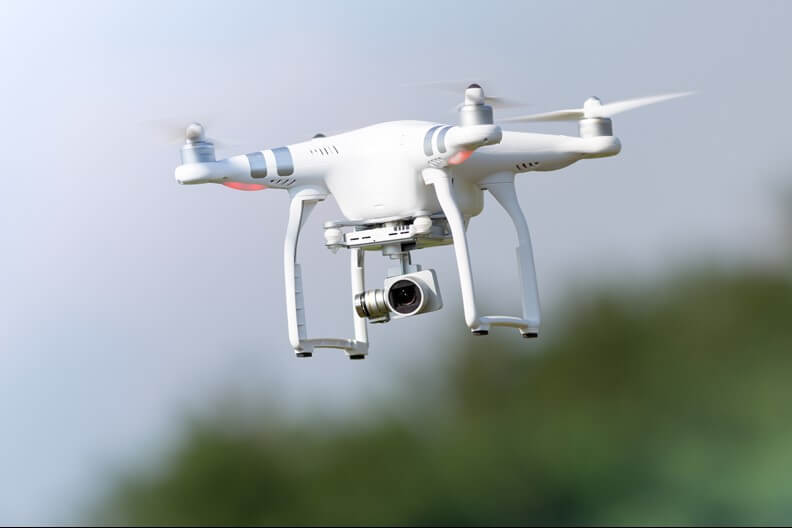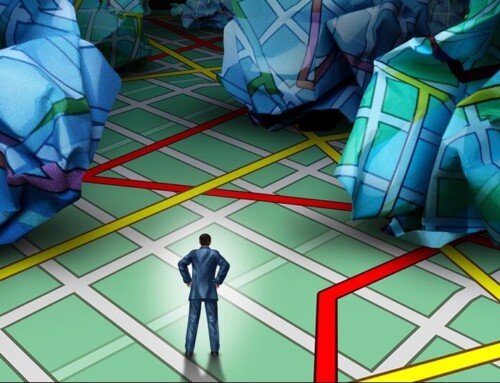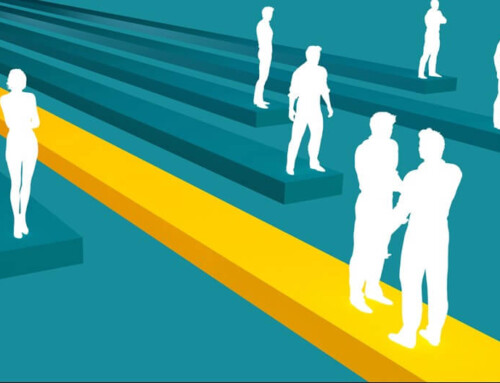Chances are, you have seen drone photography used in aerial footage of sporting events, concerts, festivals, or other events. But did you know it is a great tool for taking footage of outdoor meetings, as well?
WHY PEOPLE ARE USING DRONES NOW
A drone – which is formally called an unmanned aerial vehicle (often referred to by its acronym, UAV) – is a small aircraft that is operated remotely from outside of the aircraft instead of by a pilot on board. By leveraging a combination of aeronautics with robots, drones can not only fly, but they can also pause mid-air to capture distance, aerial shots.
Historically, you would need a helicopter to take aerial shots of an event. Hiring a helicopter to transport a photographer is downright expensive. On the other hand, the total cost of the drone, certifications, insurance, and a full crew will cost you less than the expense of sending a photographer up in a helicopter.
In addition, due to its compact size, a drone can fly at low altitudes and through structures like buildings and bridges that would be far too risky for a helicopter to navigate. As a result, drones can get impressive shots that are off-limits to those taken from a helicopter.
Given these compelling reasons, choosing drones to capture meeting footage certainly seems like a sound business decision.
WHEN SHOULD YOU INCORPORATE DRONES?
As with any other type of technology, there is a time and place to incorporate drone photography.
First and foremost, it is only safe to use drones outside. While they can hover quite low, attempting to navigate the limited airspace inside a building is simply too risky – for both the safety of attendees and the drone itself.
Second, since drones fly over the subject of their shots, they are best suited to capture medium to large meetings. A small-scale meeting might end up looking underwhelming from above, instead of inspiring.
Speaking of appearance, aerial drone photography is ideal for capturing the beauty of an impressive outdoor location. Think about offsite meetings held at exotic locales or otherwise striking venues. Flowers in full bloom, for example, take on an ethereal look when shot from above. And the higher the drone flies, the more noticeable color patterns become. Keep in mind, however, that Federal Aviation Administration (FAA) regulations limit how high drones can fly – specifically, a maximum of 400 feet above the ground.
Drones are not suitable for taking pictures at eye level, as flying this low presents a safety hazard. And they are not meant for this purpose anyway. Aerial photography is what drones are designed for and where they excel.
Drone photography is also not the best choice if you need to take pictures throughout the entire meeting. Drone operators need to change batteries frequently, with even some of the most advanced drones requiring a new battery once every 10 to 30 minutes. The battery life depends on the updraft and downdraft of the wind, how much the pilot is maneuvering the drone, as well as the signal strength between the drone and pilot’s control unit.
Drones are best suited to take pictures of individual settings like an aesthetically pleasing landscape, a group shot or a fun setup for a team building activity. Additionally, drone photography works best in the daytime, or in well-lighted, outdoor spaces.
DRONES VERSUS STANDARD PHOTOGRAPHY
Drone pilots can fly to places that are difficult or downright impossible for a person wielding a camera to go. This allows drones to get shots that might be unattainable otherwise, and these shots can be interesting, breathtaking, and inspiring.
Perhaps your offsite meeting takes place in a valley surrounded by soaring mountains and you want to highlight the grandeur of the setting. By utilizing a drone to capture the aerial shots, you can get the pictures or videos you need without trying to convince a photographer to hike up a steep mountain trail.
Then there is the obvious advantage of using drones to capture aerial shots that are more exciting and aspirational than pictures taken from the ground. A sweeping panorama of the meeting from above is a great way to drum up enthusiasm for employees or other stakeholders watching footage of the meeting later.
TIPS FOR HIRING A DRONE PHOTOGRAPHER
Drones cannot operate on their own; a person must control them. This means that you will need to hire a photographer with expertise in drone photography. And the process of doing so is a bit different from hiring a traditional photographer.
There are several critical pieces of information you need to obtain from any drone photographer you consider hiring:
- Confirm that they carry a Part 107 license, which is required by the FAA for any drone operator providing commercial services. Do not just take the photographer’s word for it; politely ask to see the license in person with your own eyes. PRO TIP: If you require drone photography at dusk or in the evening, a Part 107.29 license is also required. Plus, the drone must have flashing lights that can be seen from two miles away.
- Ensure that the drone operator is covered by liability insurance and that this is acceptable based on your company’s requirements. While this is not legally required, and drone accidents are rare, you want to minimize potential risks with drone use.
- If the location of the meeting is anywhere in the vicinity of a restricted or controlled airspace, the drone operator must have any required authorizations or waivers. Again, make sure you review the paperwork carefully.
- Two people are generally required for drone photography. One who acts as the pilot and photographer. The other is the spotter who watches the drone in flight looking for any obstacles and is minimizing the risk for accidents such as getting too close to powerlines, buildings, trees, or outdoor lighting.
- Assess the drone operator’s photography and videography skills. You want someone who is skilled in these areas, not just someone who can fly a drone. Question them about photography issues like lighting, focus and how the speed of the drone or weather conditions might affect the pictures or videos.
- Drone photography is generally limited to piloting the drone and capturing the footage of the event. There will likely be extra fees for editing, color correcting or other services. Inquire about any additional services you may need before hiring a drone photographer to clarify any extra charges that you may incur, including trip charges.
- Clarify who owns the rights to the drone photography footage and how it will be used in writing. This can help mitigate problems that may occur later with copyright, licensing, and promotional use.
- Request examples of the photographer’s work and get references from former clients if possible. Considering the ethical and legal issues at stake, it is imperative to hire someone who follows the law and has the proper licenses.
PICTURE STANDOUT MEETING FOOTAGE
When you go the extra mile to get drone footage of meetings, you demonstrate to your employees and other stakeholders that your organization cares about quality. Pictures and videos taken by a drone also come across as distinctly modern and advanced, which also elevates your company’s image. With the right amount of research and preparation, hiring a drone photographer is an investment that can pay off handsomely in the long run.
Are you interested in getting drone footage of your next corporate meeting or event? If so, contact Gavel International to see how working with a meeting planning company can help you get exciting and stunning footage.
- 5 Ways to Build a Productive and Participatory Meeting Culture - March 31, 2025
- Build a Culture of Curiosity and Solutions-Driven Change - March 17, 2025
- Gavel International Celebrates GMID 2025 - March 14, 2025






